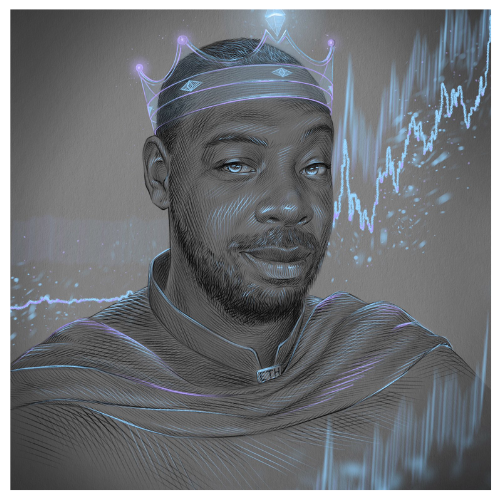Miro’s X-Ray Reveals Defiant Art
Picasso’s Legacy in Asia: How the Art Market Continues to Chase the Master
Greetings Warriors
Today we’re pulling back the curtain—literally—on one of the most fascinating art revelations of our time. We’re talking about Joan Miró, the quiet revolutionary, the dreamer who turned canvas into cosmic truth. And now, nearly a century later, he’s still talking to us from beyond the paint.
Thanks to some next-level technology and old-school detective work, scientists and art historians have just uncovered a secret portrait buried beneath one of Miró’s iconic abstract paintings. And not just any face—it’s his mother’s.
Let’s break this down the only way we know how: with fire, focus, and real respect for the power of art to say what words never could.
Picasso, Paloma and Claude - 1950
The Warrior of Abstraction Returns to the Spotlight
If you’ve read my piece on what abstract art really is, then you already know Joan Miró was no ordinary artist. He didn’t just paint. He dismantled tradition, shattered boundaries, and rewrote the visual language of the modern world.
His piece Peinture (Étoile Bleue), 1927—which I highlighted in that article—is the perfect example. It’s a visual poem. A battlefield. A dream. And now, we’re learning that Miró wasn’t just creating layered meaning metaphorically—he was literally painting over ghosts from his past.
Get two custom AI Art created by yours "King Romulus" truly every month. Uniquely crafted, with expressive quotes that dive deep into my subconsciousness. One of the art pieces will be posted on my Instagram account as well. Live through art history in the making!
Three Paint Clumps and a Mystery: What Sparked the Investigation?
It started small—just three bumps of paint rising from the blue surface of a painting titled Pintura (Painting), created by Miró between 1925 and 1927.
For decades, the piece sat in the Fundació Joan Miró in Barcelona, gifted to them after the death of Miró’s friend and art promoter, Joan Prats. But something about the canvas kept whispering secrets.
Old X-rays hinted that something was hiding underneath. Something more traditional. Something deeply personal.
When Science Meets Spirit: The X-Ray Revelation
Using a full arsenal of art forensics—X-ray, ultraviolet light, hyperspectral imaging, raking light, transmitted light—a team of art investigators went to work.
And what they found was mind-blowing:
A full portrait of a well-dressed, middle-aged woman, painted in a style far removed from Miró’s usual cosmic abstractions.
Her earrings. Her brooch. Her presence.
Not just anyone… it was Miró’s mother, Dolors Ferrà i Oromí.
Rebellion in Layers: Miró's Silent Goodbye to Bourgeois Expectations
Let’s be real—this wasn’t an accident. This was intentional. A decision. A quiet rebellion.
Miró didn’t lack materials. He wasn’t out in the jungle scraping for canvases. He had options. But he chose to paint over this portrait.
Art historians now see it as a personal revolution—a symbolic act of breaking free from the middle-class expectations his family placed on him. Instead of being an accountant, he became a destroyer of convention.
And yet, he left her face intact. He preserved the portrait’s most emotional core. That’s not hate. That’s respect wrapped in rebellion.
Shameless plug 🤣 My own AI art for sale$$$
The Emotional Tug-of-War: Affection Beneath the Anarchy
This is where it gets deep.
Miró could have painted over anything. But he chose to keep her face, her features, her energy.
He didn’t erase her—he transformed her.
Even the three-dimensional paint clumps from her jewelry? He left them there.
He could’ve scraped them down, but he didn’t.
Why? Because even when we move forward as warriors, we never fully abandon where we came from.
That’s the truth encoded in this act.
The Exhibition That Changed Everything: 'Under the Layers of Miró'
The full story is now being told in a new exhibition:
"Under the Layers of Miró: A Scientific Investigation" at the Fundació Joan Miró in Barcelona.
They’ve even released a documentary: "El Secret de Miró."
For the first time, the public will see Pintura side-by-side with the original portrait of his mother, created in 1907 by Cristòfol Montserrat Jorba.
It’s a meeting of past and present. Rebellion and reverence. Abstract and personal.
Iri - Definitely Not A Fairy
A Lesson for All Artists: Speak in Code, But Speak Honestly
You already know I believe every creative is a warrior. And Miró? He didn’t shout. He didn’t burn bridges.
He left breadcrumbs—tiny, textured truths beneath his work for us to uncover when we were finally ready.
It took nearly 100 years for the world to decode this message. And you know what that tells me?
Art never stops talking. You just have to keep listening.
Miró gave us a masterclass in how to channel emotion, rebellion, love, and loss—all in a single canvas.
Final Thoughts: Miró’s Truth Was Buried in Blue, But It Never Died
Joan Miró didn’t need permission to evolve. He didn’t need validation to paint what he felt.
And when the world boxed him in, he didn’t scream. He layered. He abstracted. He transformed.
That’s why I said in my breakdown of abstract art—this isn’t random. It’s real. It’s coded truth from artists who feel too much and speak in color instead of words.
So here’s your takeaway, Warrior:
Whatever you’ve buried, whatever you’ve painted over—it’s not gone. It’s part of your masterpiece.
Use it. Channel it. Build your legacy with it.
Because every layer has a purpose. Every shadow holds a spark.













